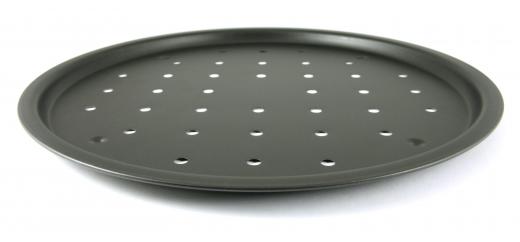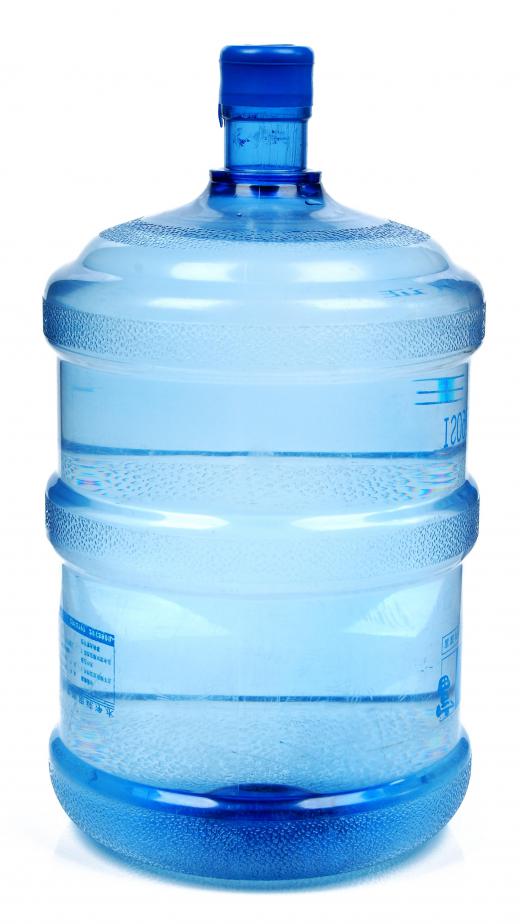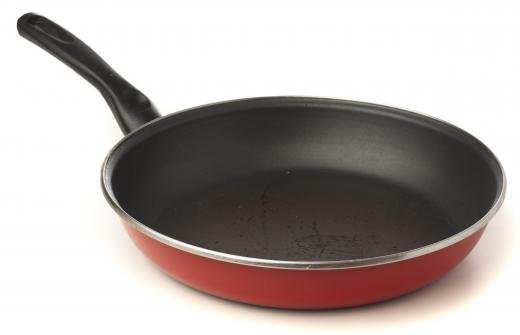Hard anodizing, also known as hardcoating or Type III anodizing, is a process used to create a hard wearing, corrosion resistant coating on a variety of metals. Anodizing can be broken down into two broad sub-categories: decorative and hard anodizing. The main differences between the two is how thick and durable the coating is, and the exact process used to create it.
The Anodizing Process

Anodizing a metal part involves putting it into a liquid that is electrically conductive, typically an acid solution, called an electrolyte. Circuits have a positive electrode (cathode) where electrons enter and a negative one (anode) where they leave; in anodizing, the metal part becomes the negative electrode. When an electric current is passed through the solution, the action of the electrons leaving the circuit through the metal part causes a tough, corrosion resistant coating of oxidization to build up. The coating can either be left as it is after this treatment or further enhanced with decorative dyes and other performance-improving additives.

The process of manufacturing hard anodized parts differs from decorative coatings in several ways. It uses electric currents that are generally higher and electrolyte solutions that are slightly weaker. The temperature of the electrolyte solution is also lower allowing for less distortion of precision parts and better adhesion of the coating. Generally speaking, the anodizing process is also considered to be relatively environmentally friendly and the byproducts are recyclable.
Types of Coatings

Hard anodized coatings are typically applied to heavy wear industrial parts intended for use in aggressive or highly corrosive applications. These coatings are typically far thicker and harder than decorative ones, and usually lend the parts a durability approaching that of hard faced or case hardened steel. They also penetrate and cover surface imperfections such as fissures better.

Generally, hard anodized parts have coatings which exceed 10 μm (0.01 mm or 0.0004 inches) with typical coatings exceeding 25 μm (0.025 mm or 0.001 inches). Decorative anodizing usually features coatings of less than 10 μm and, although durable, doesn't have the same exceptional wear characteristics of hard anodizing. Decorative or architectural treatments are commonly found on consumer items such as domestic cookware, electronic device casings, and ornaments.
Hardcoated items usually have a dark gray, matte finish, although this can vary depending on the metal the item is made of and the composition of the electrolyte solution. This method can also produce a black finish as well as various shades of bronze. Decorative anodizing usually produces a lighter shade, and can be made matte or shiny. Both types typically take dye well.
Benefits
One of the main reasons to anodize metal is to make it more resistant to corrosion. The thick outer oxidized layer prevents the internal material from being exposed to moisture, oxygen, and other factors that can cause the metal to disintegrate. Sealed items are even more corrosion resistant and can often stand up to thousands of hours of exposure to salt water sprays.
The outer coating is also extremely hard, typically much harder than the original metal. In many cases, a thick hard anodized coating can be as hard as tool steel. It's also very wear resistant, meaning that it is often used for pistons and other sliding parts that often rub together. Because the oxidation layer is part of the metal itself, it won't peel off; the metal surface may be rough after it's anodized, however, so it may be necessary to grind it down to prevent bits from breaking off.
Hard anodized metals are usually very insulating, meaning that they don't conduct heat or electricity well. This is especially useful for applications that require the part be used at high temperatures. The coating is also chemically stable and non-toxic.
Additional Treatments
As with decorative coatings, hard anodized surfaces can be dyed, although, in most cases, they are left as is due to the purely functional nature of most of the parts involved. They are, however, often impregnated with performance enhancing additives such as Teflon® which improve the part's self-lubrication. In some cases, they are also sealed in boiling distilled water or dichromate solutions to further improve their corrosion resistance.
Disadvantages
Metal that has been anodized has a much lower fatigue strength, meaning that it's more likely to fracture when put under stress, although this can be improved if the item is sealed. Sealing the item can reduce its resistance to abrasive wear, however, so whether or not a part is sealed often depends on its final use. Anodizing also does not protect thinner metal items from damage like dents. The outer coating does make the metal part thicker, which can be a problem if screw holes or other spaces are pre-drilled.
Materials That Can Be Anodized
Although aluminum is by far the most common metal subjected to hard anodizing, other materials can benefit from the treatment, including tantalum, magnesium, and titanium. In all cases, the treatments lend the parts exceptional wear and corrosion resistance and can be dyed nearly any color. Common uses for hard anodized parts include heavy commercial cook and bakeware, medical prosthetic parts, and automotive components. The military is another large consumer of these products, as most hard anodized surfaces meet or exceed stringent military specifications.

